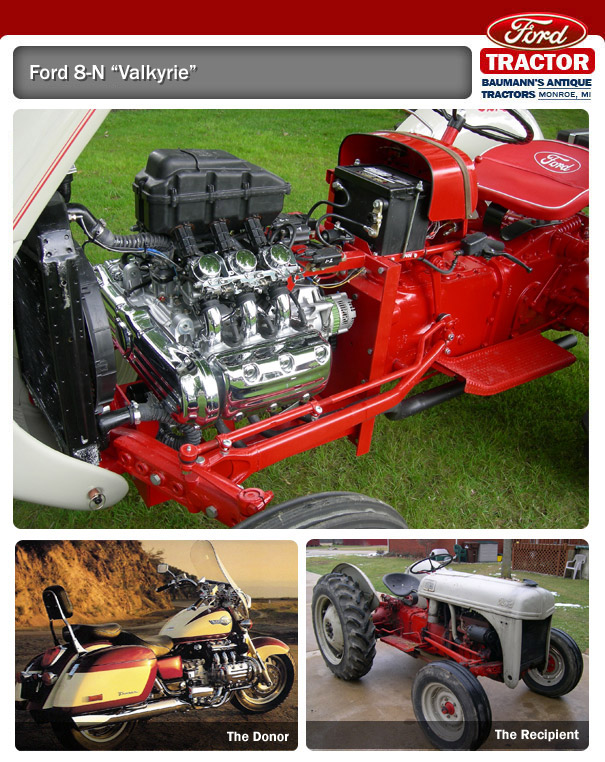Toyman01 wrote: http://www.yesterdaystractors.com/Farmall-M-Tractor-Parts.html
Even if it needs bearings and the crank reground, you wouldn't be much more invested rebuilding the thing versus a HF engine.
Toyman01 wrote: http://www.yesterdaystractors.com/Farmall-M-Tractor-Parts.html
Even if it needs bearings and the crank reground, you wouldn't be much more invested rebuilding the thing versus a HF engine.
I would bet that the tractor is worth more with a seized up original engine than with a running HF engine. Plus, how much longer do you think a rebuilt original engine will live compared to a HF engine? I bet it would run long enough to justify the cost of the rebuild. Not that I think it needs a rebuild, but if it did I think it would be worth every penny.
I'll toss my opinion in... Rebuilding those old engines is super simple. Since they don't spin 5000 rpms, the bearing tolerances and condition are much less important than you think. I would take the head off, soak the cylinders with diesel for a few days, then whack on the piston tops with a 2x4. Break them loose, fire it up, and you might be shocked at how well it runs. I have done that many times. In fact, I still use a John Deere G that Dad bought back in the 70s that was fixed exactly that way. Bores rusty (but not pitted) and locked up. Whacked them free, re-used the original head gasket with a little spray adhesive, and it will still drag a 3 bottom plow all day.
Using a belt to reduce speed may result in a large loss of Hp. I use Gravely tractors and despite having only 7.6Hp with it's all gear drive on the tractor and attachments it can do a lot work. I am going to re-engine one and I figure it will take a 12-14 hp modern engine to replace the raw torque the Gravely engine makes. That is also because I will be reducing the top engine speed to 2600 rpm.
Gearing it as you've said in the OP would work correctly. You just have to account for any losses in the reduction drive, which should be minimal. Horses ARE indeed the same. Torque doesn't matter much, but as pointed out earlier, building huge engines with really low output makes them crazy robust.
That said, yes I would just try and free up the engine in the tractor.
All these responses about just free the motor and rebuild it should probably be your go to answer here. I had forgotten about it, but my grandfather had an old tractor that sat outside under a tarp for years. He called it ol' Kirby, one day we pulled the tarp off, and it was one of those old antique jobs with the crank in the front for winding up a starter mechanism. After soaking the engine we got it free'd up and spinning, we then just hooked it to his old C10 pickup and pull started it till it finally ran. Still didn't like cold mornings, but you could reliably get it cranked within 5 min or so after that.
Ol'Kirby was a retired tractor, we putted around the property on him, the newer Kubota got the nod for plowing fields and bush hogging.
ebonyandivory wrote: In reply to rcutclif: They weren't "kipping pull-ups" were they?
no, I just watched a video - I didn't know what that was - those look like BS pull ups to me. I try NOT to use my legs to swing myself up.
But yes, I do think that would change my calculations.
logdog wrote: LS swap?

I always had a soft spot for these. Easy swap in a Ford tractor like an 8N, 9N, 601, Jubilee.
https://www.youtube.com/watch?v=nEPxN0DcgZ4
Honda Valkyrie-powered Ford 8N
This guy is the right kind of nuts.
You'll need to log in to post.